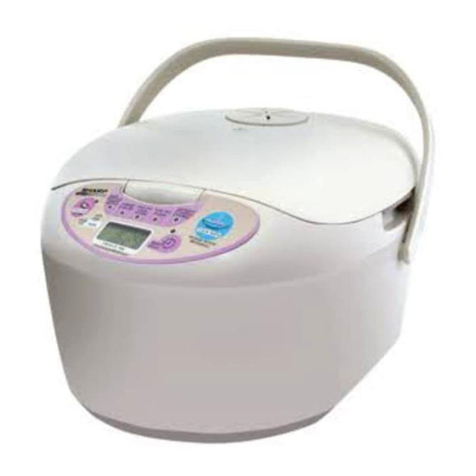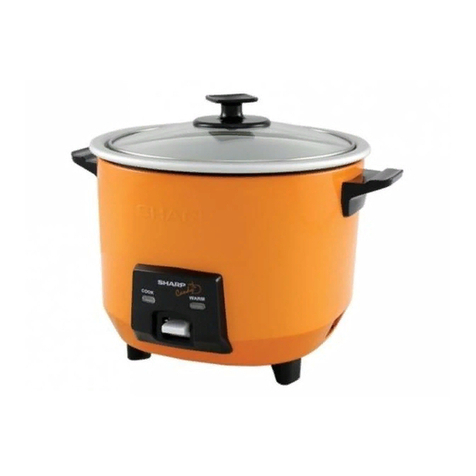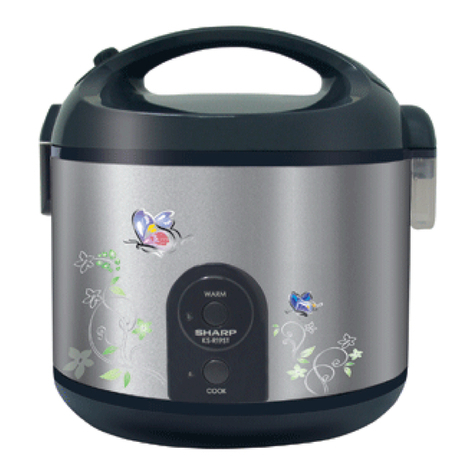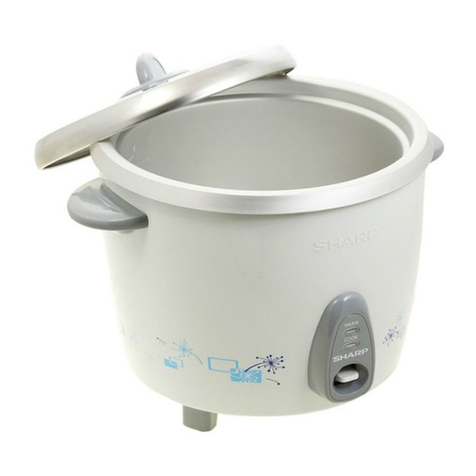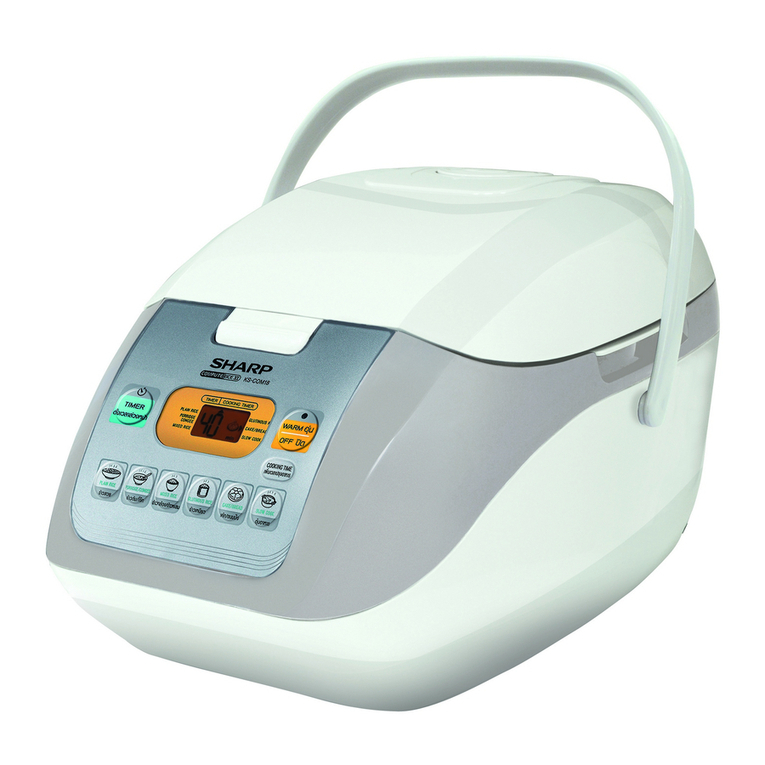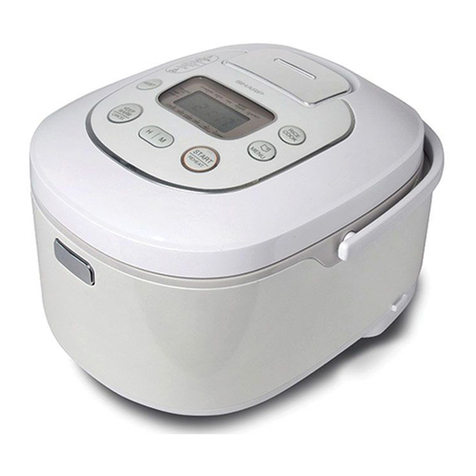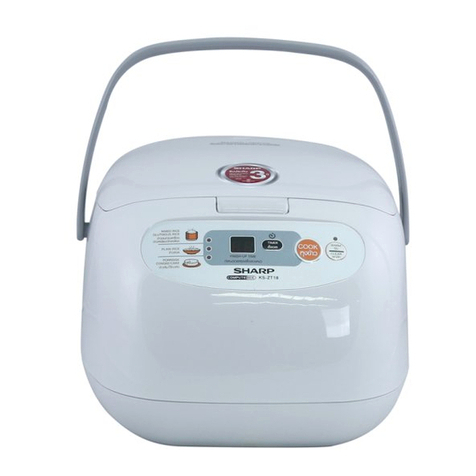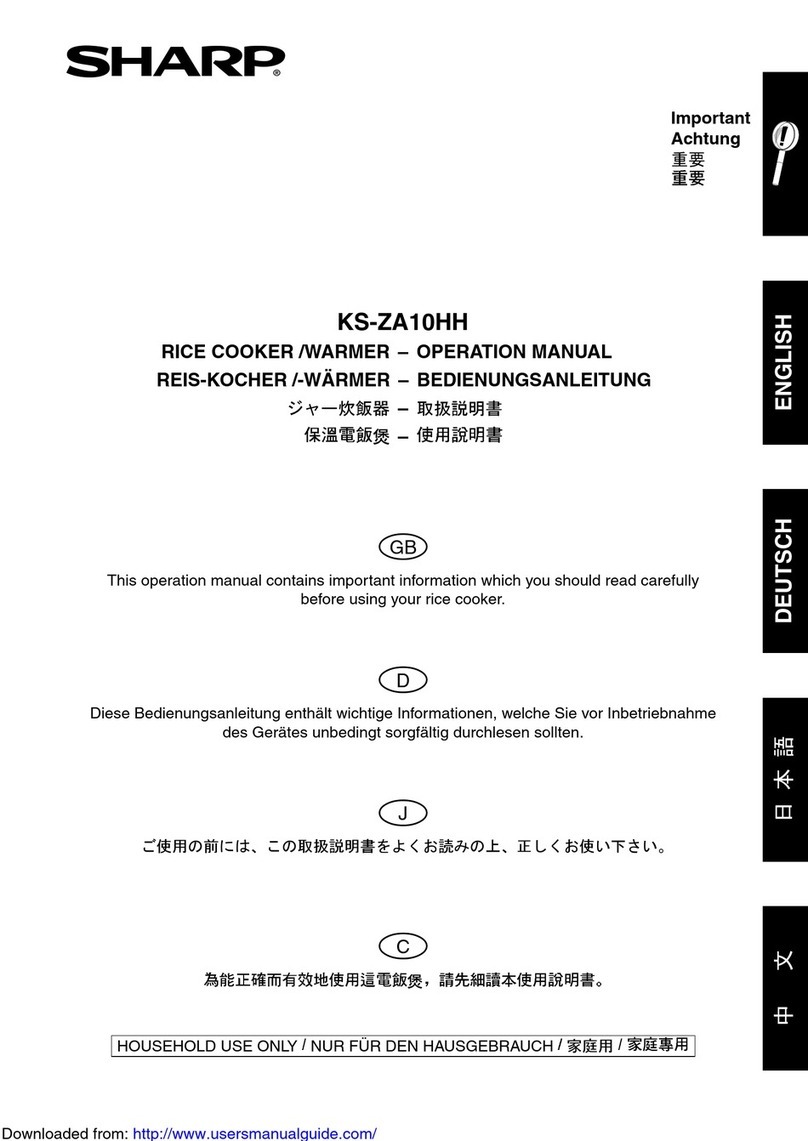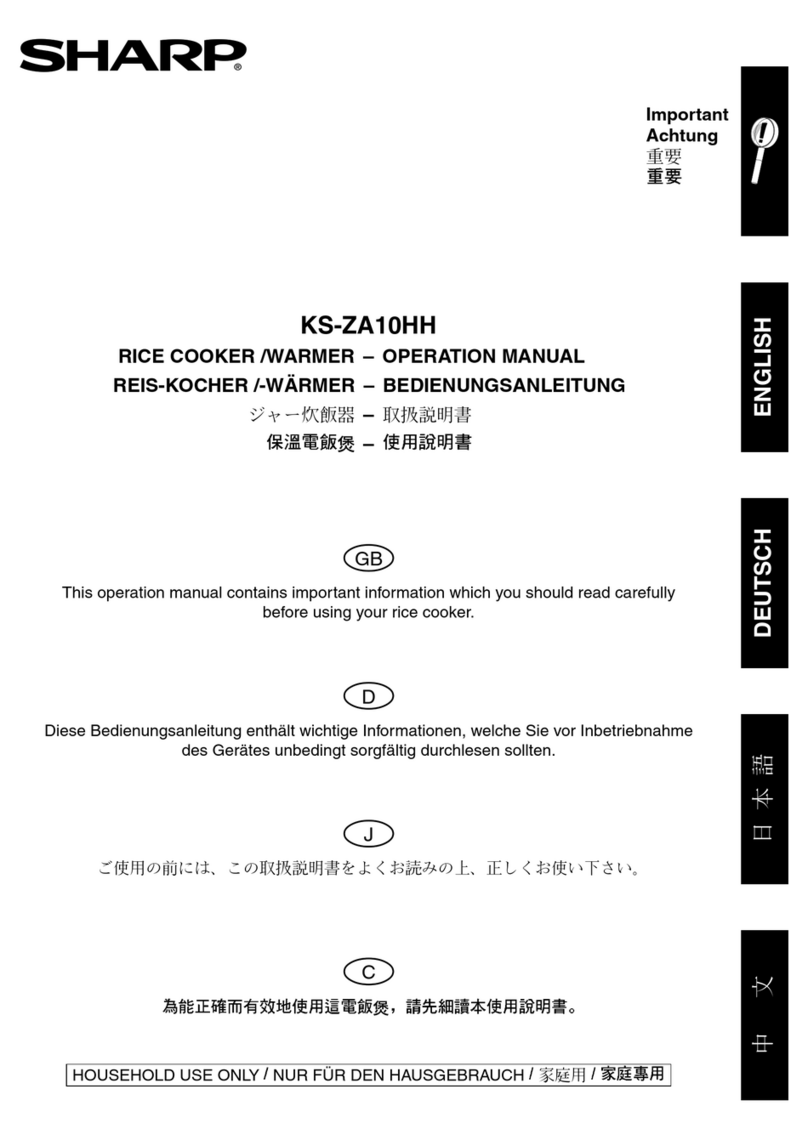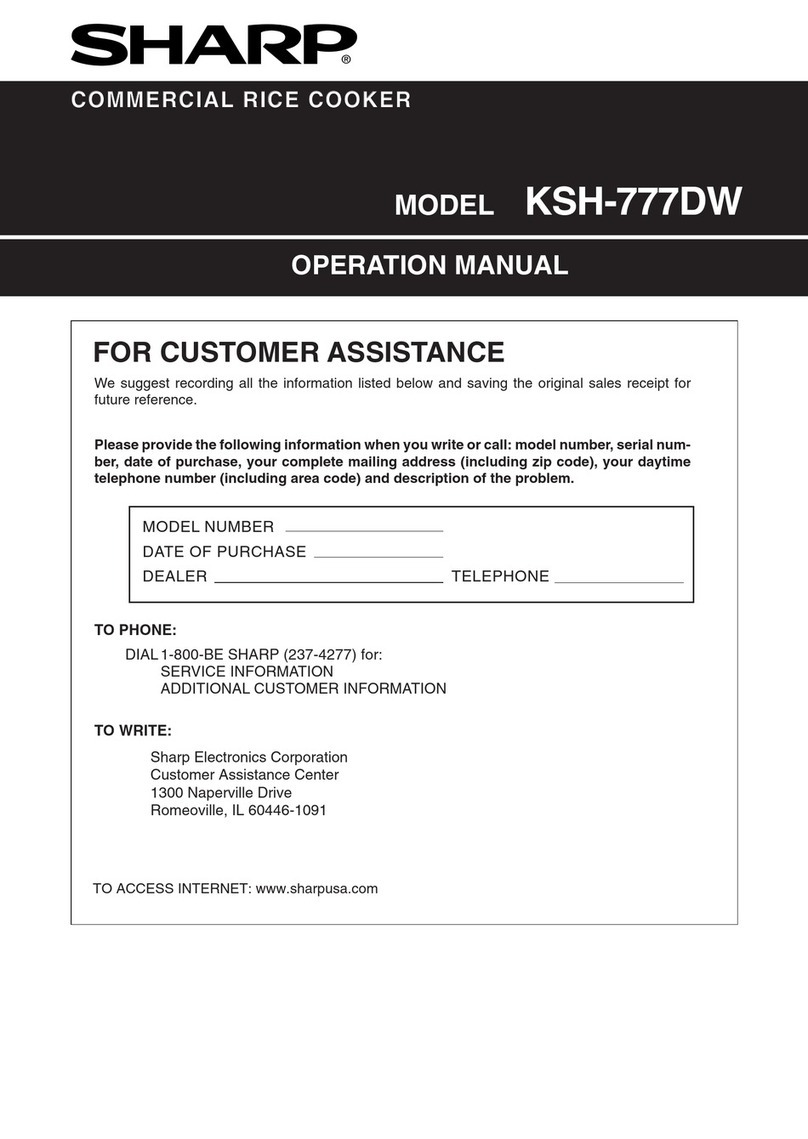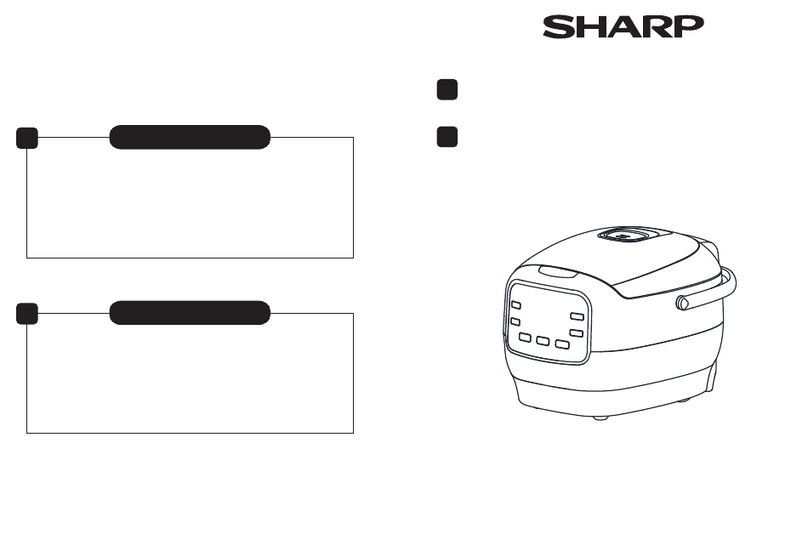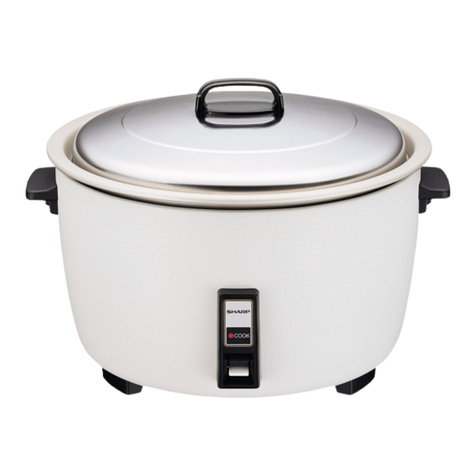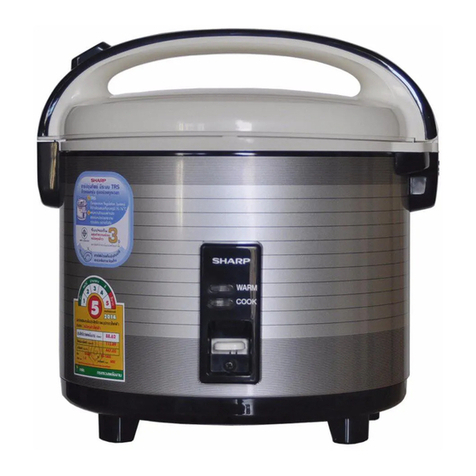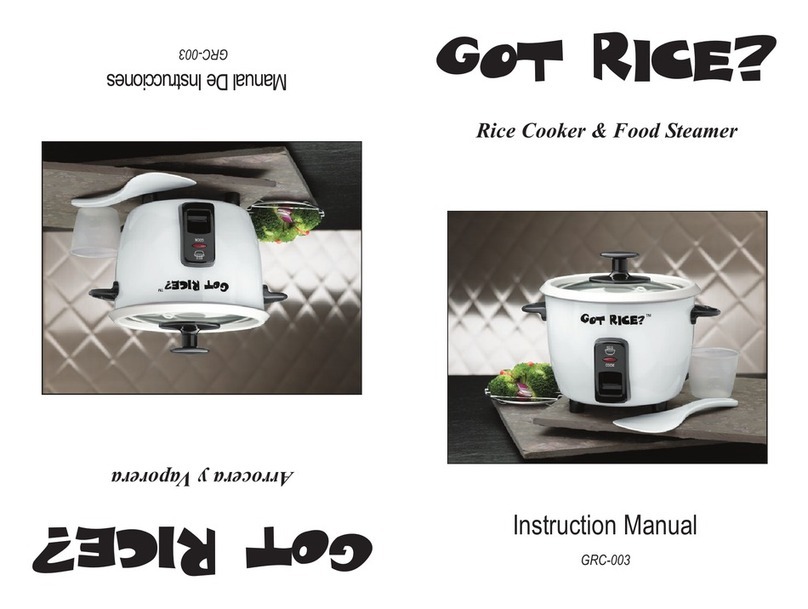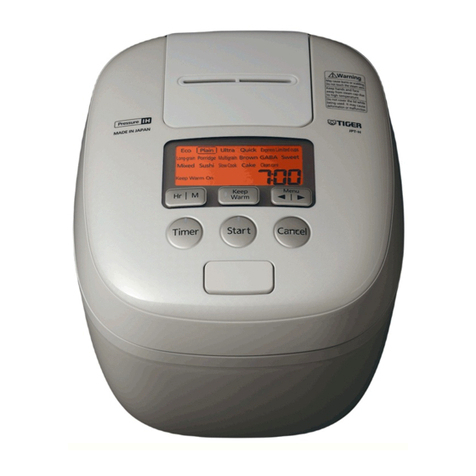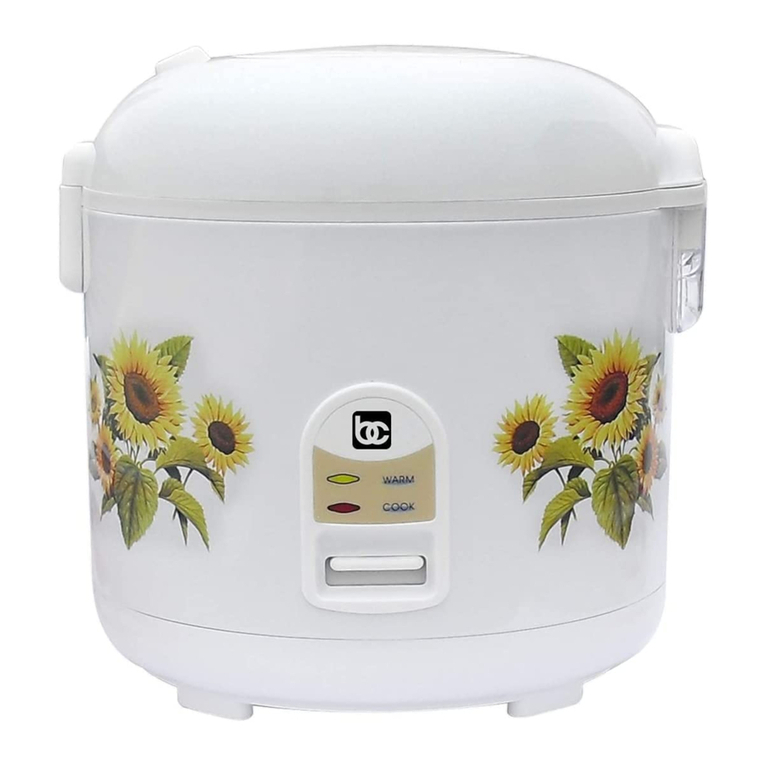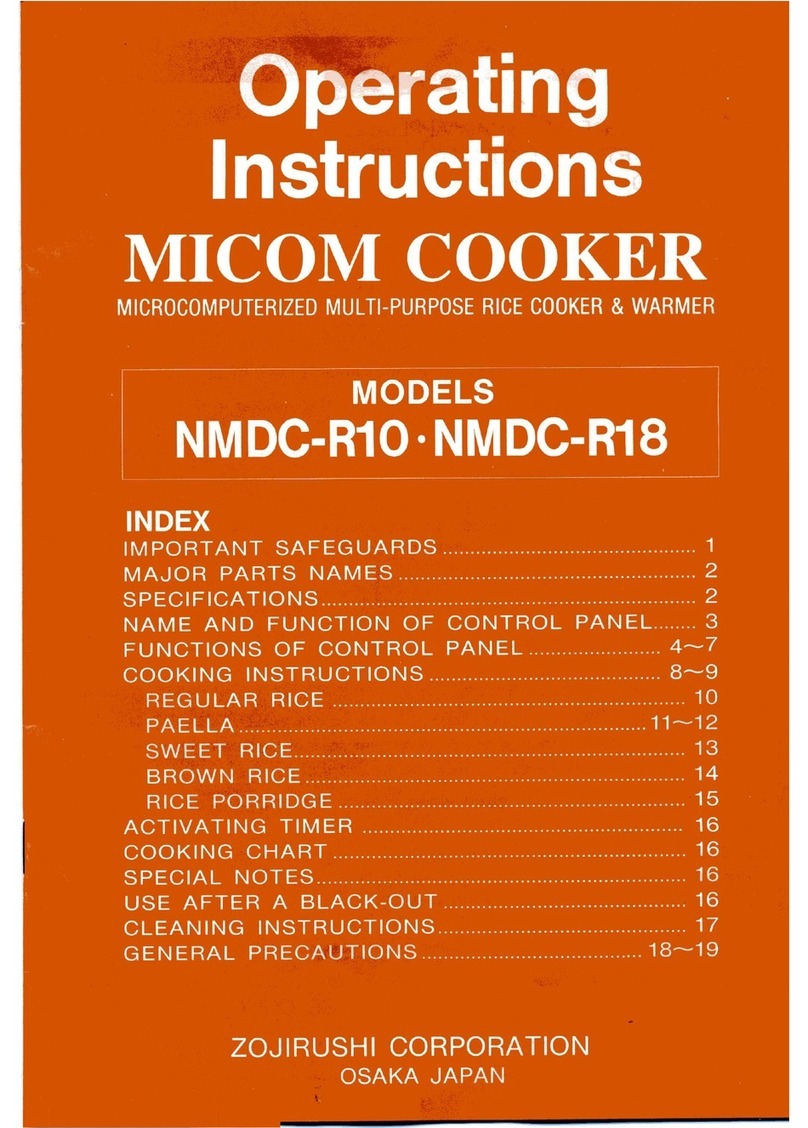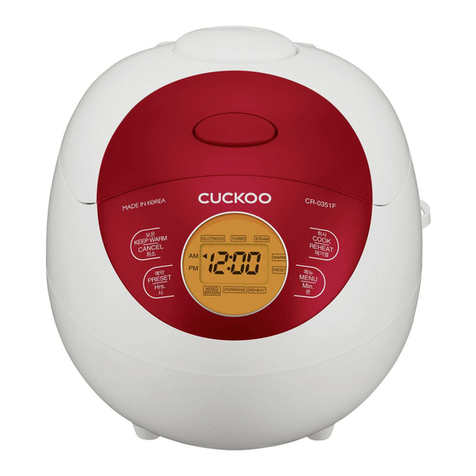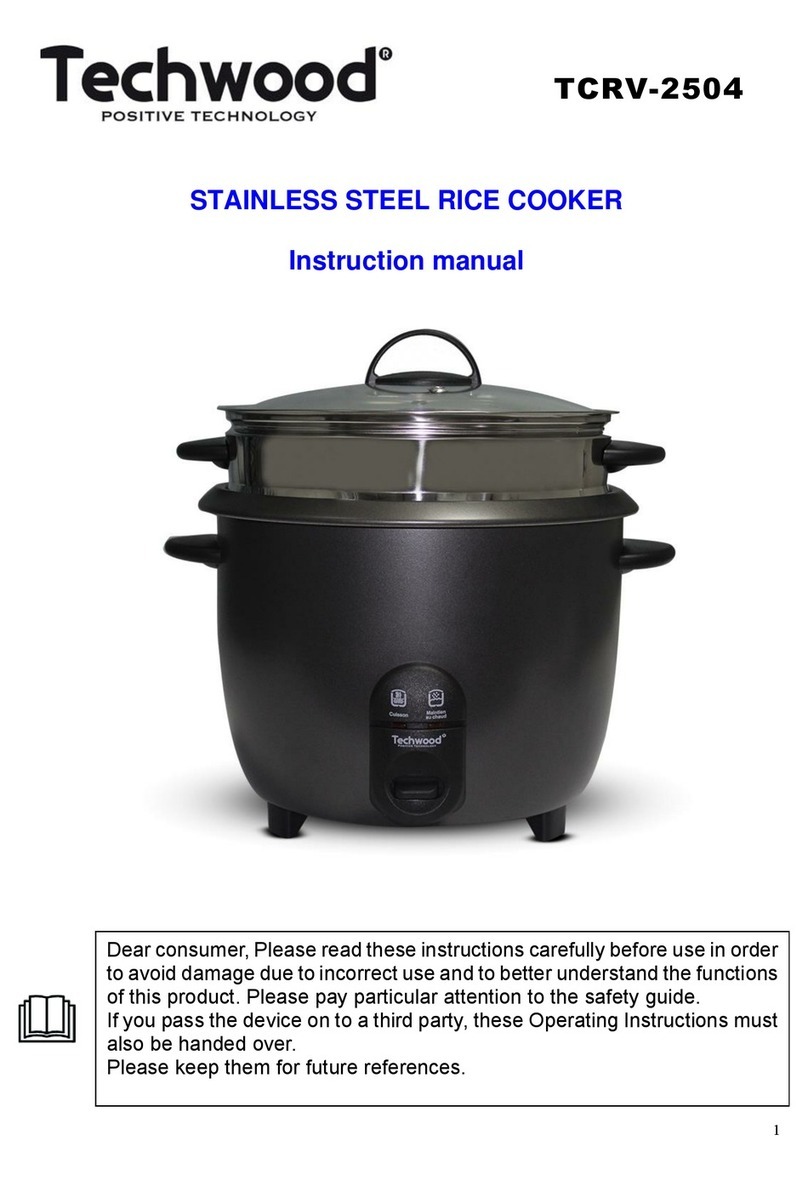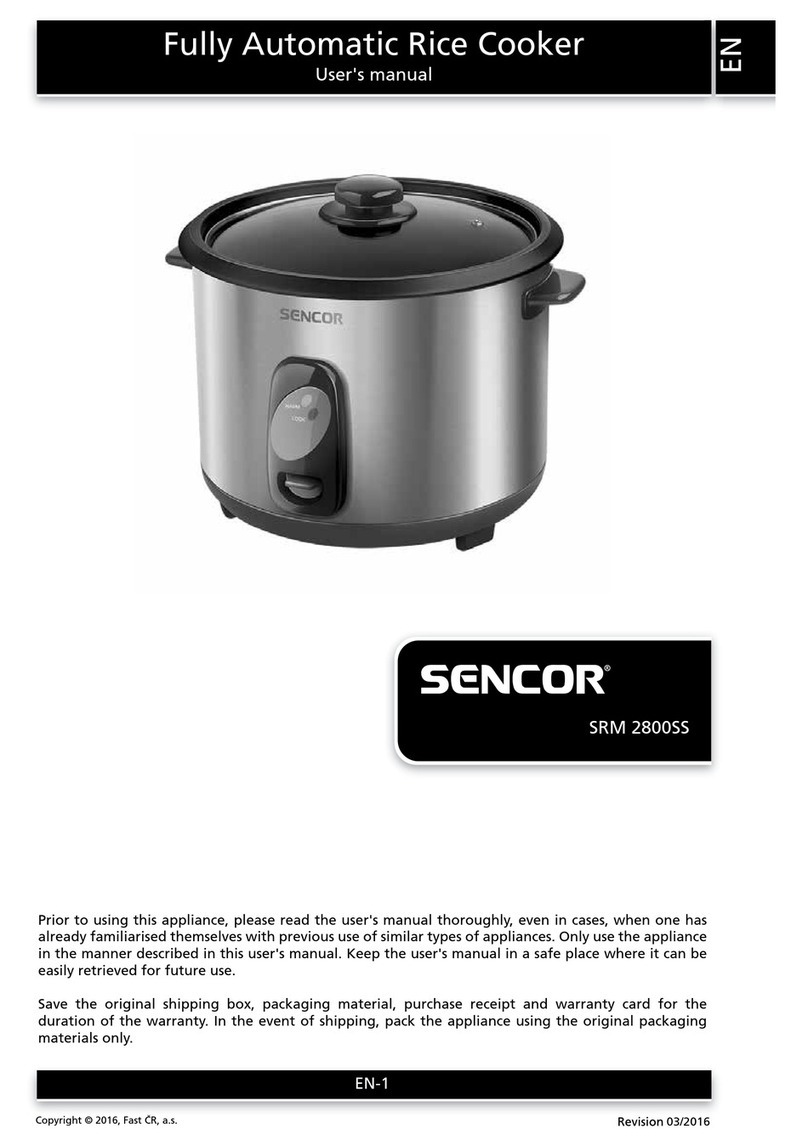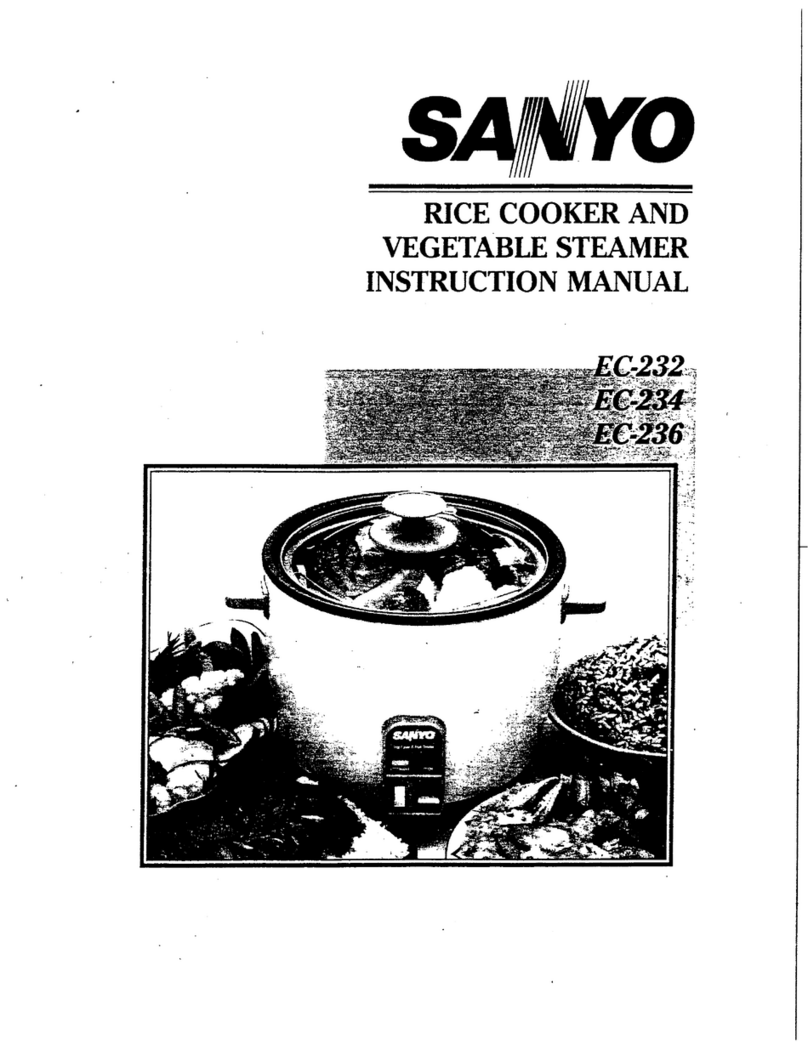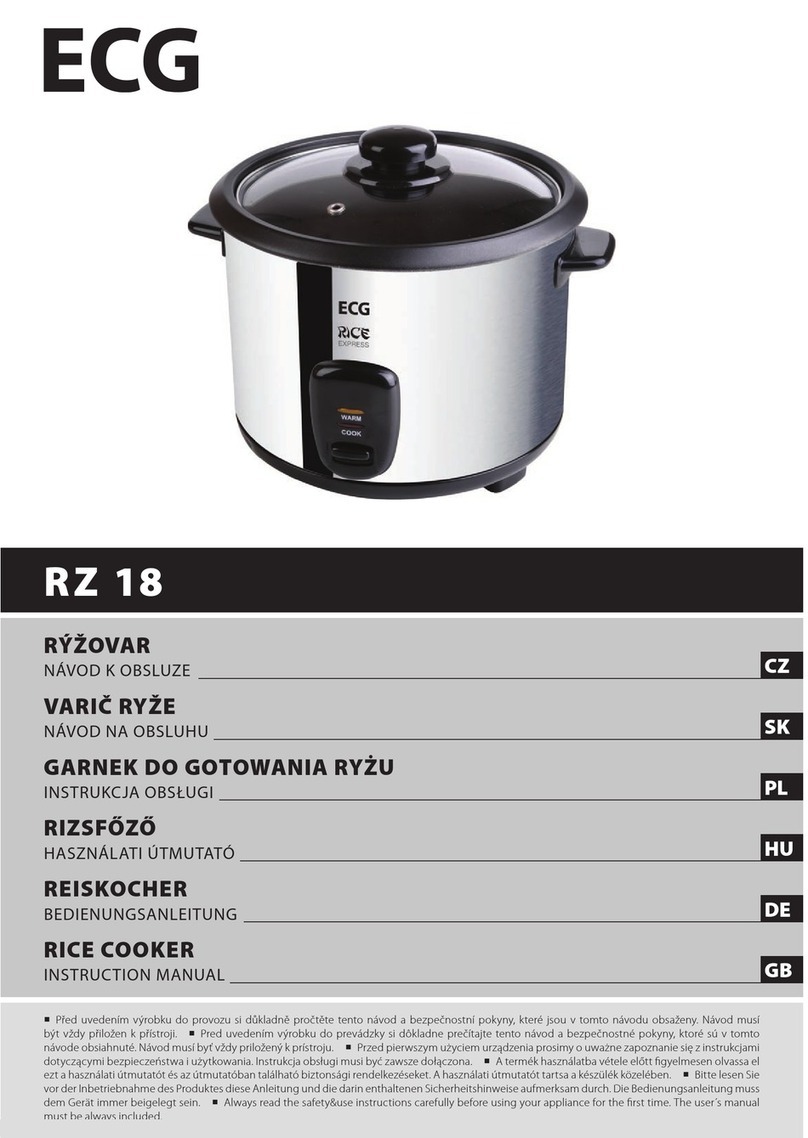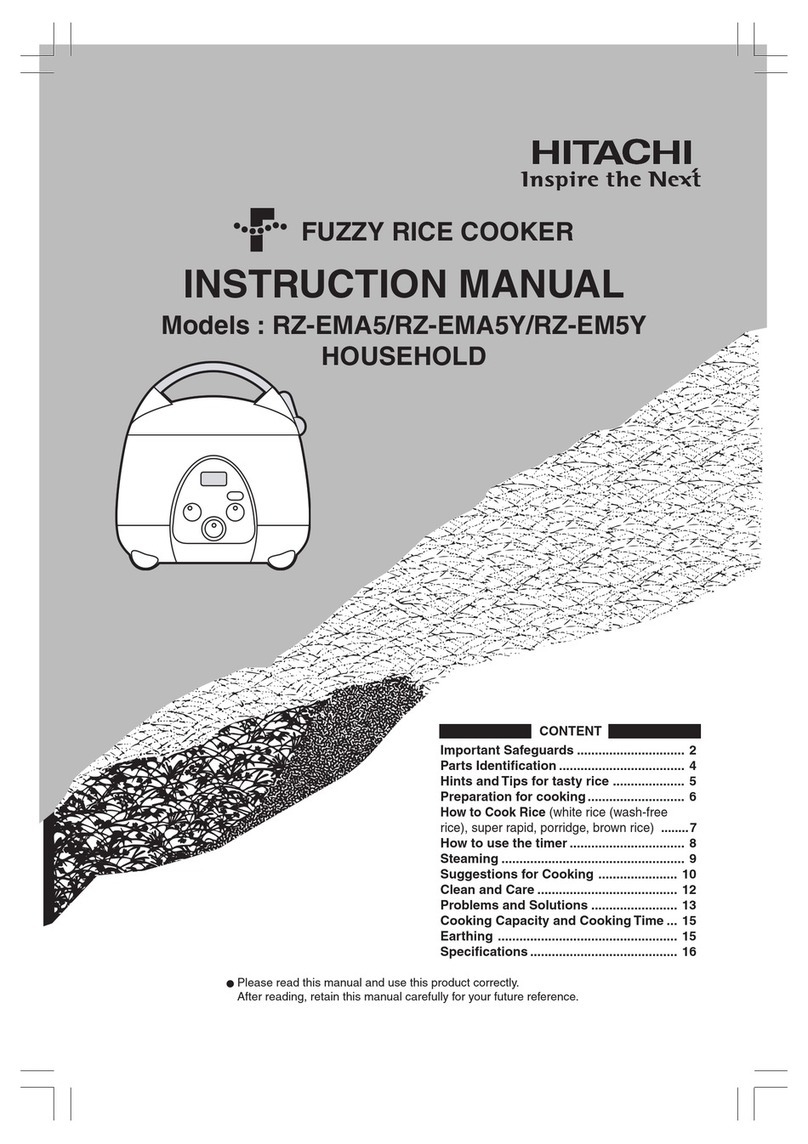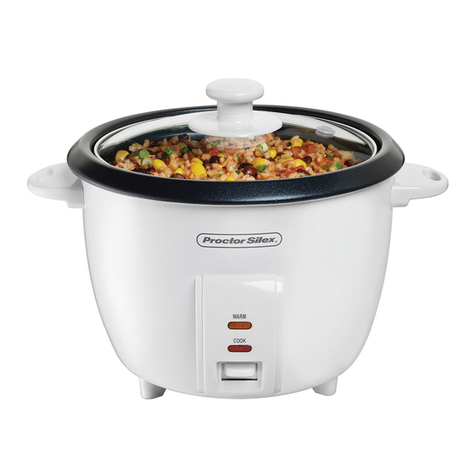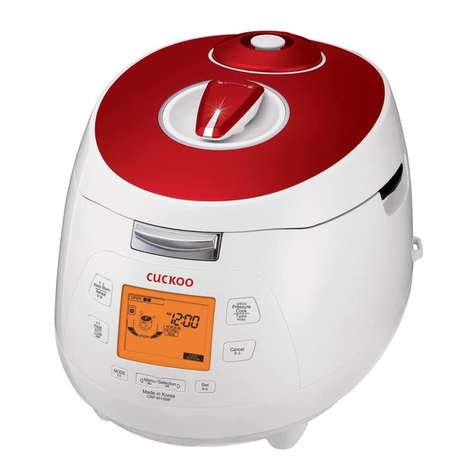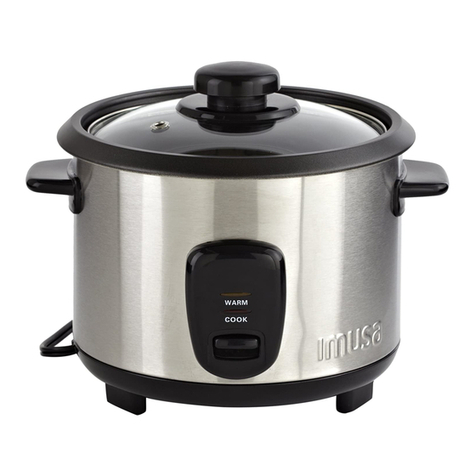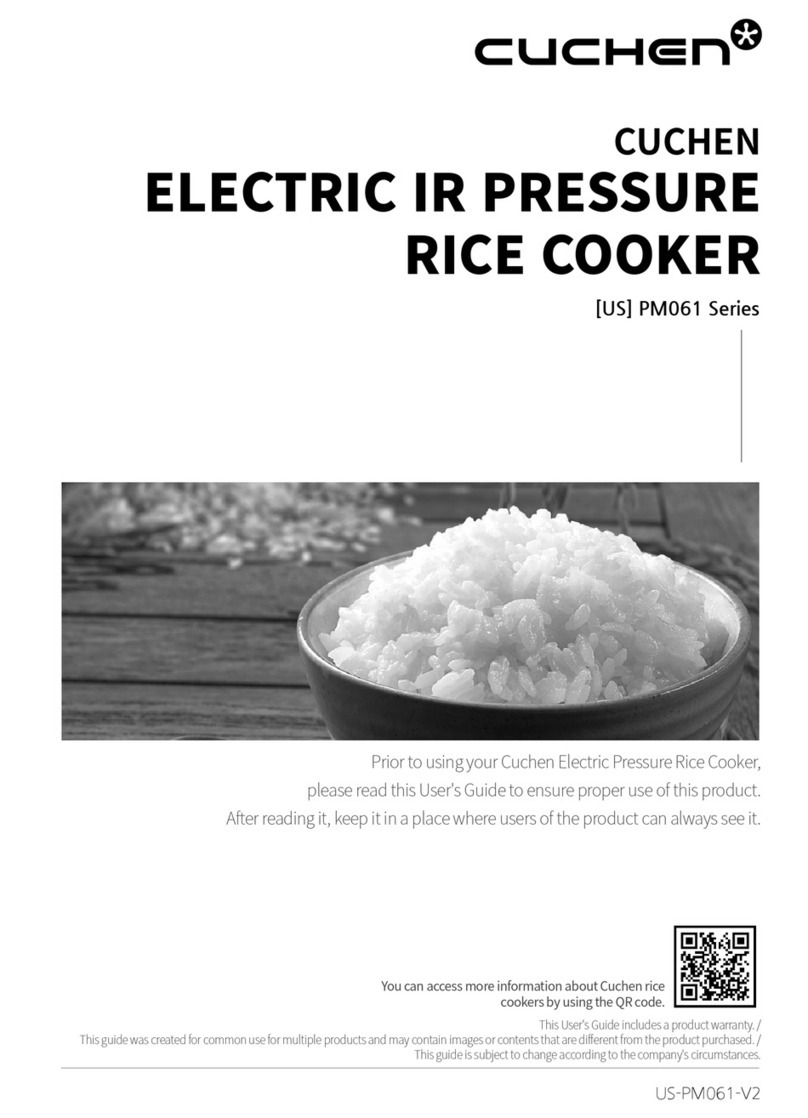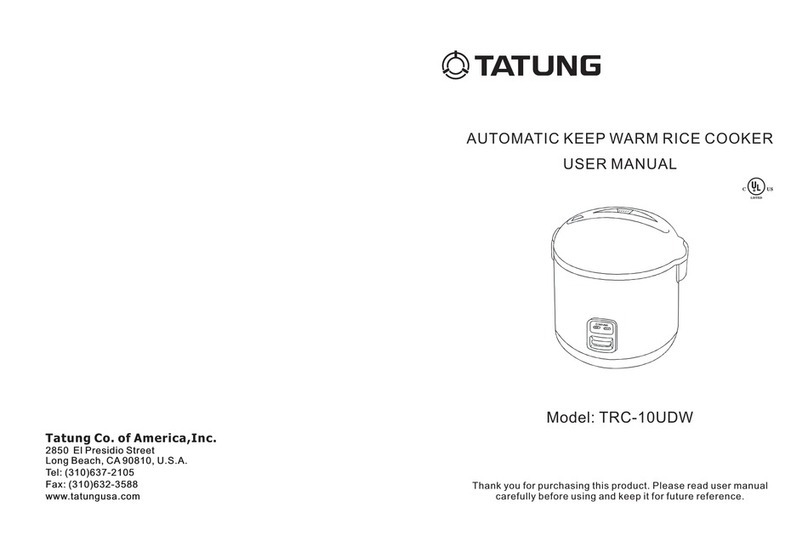
3
CAUTIONS FOR USE
Never share the wall outlet with other appliances.
Insert the plug into the wall outlet firmly and when disconnecting, hold the plug and pull it out without touching
the power cord.
In case the power cord is broken, it must be replaced by manufacturer or appointed service providers or
equivalent professionals to avoid any damages.
Do not immerse the set in water or sprinkling water on the heater plate.
If the switch is turned off prematurely resulting in cook failure, do not attempt to keep the switch pressed
forcibly. Malfunction may occur. The possible cause of premature turning-off of the switch is rice sticking to the
bottom of inner pot or the heater plate.
Keep the switch away from tableware.
Do not put the cooker on a wet floor, under direct sunlight or near the gas stove.
Never connect the plug with your wet hand, it may expose you to electric shock. Disconnect the plug from the
wall outlet when not using the cooker.
Children should be supervised to ensure that they do not play with the cooker.
This cooker is not intended for use by persons (including children) with reduced physical, sensory or mental
capability, or lack of experience and knowledge. Unless they have been given supervision or instruction
concerning the use of the cooker by a person who will responsible for their safety.
This cooker is intended to be used in household and similar locations such as:
- Staff kitchen areas in shops, offices, and other working environments;
- By guests in the hotels, motels and other residential type of environments;
- Bed and breakfast type of environments.
Do not open the lid while cooking to avoid hot steam.
Do not use the inner pot with other heating appliances such as a gas stove. The inner pot may be transformed
and result in poor cooking food.
Do not give strong vibration of impact during cooking. It may cause an irregular operation-of thermostat to lead
to poor rice-cooker.
Always keep the surface of inner pot, heater plate and inner lid clean.
Do not place wiping cloth on the lid or the handle when using.
This model is for rice cooking and heat retention. Do not use it as follows. Boiling-over or smell permeation will
occur.
“Heat retention of food (boiling rice, steamed rice with red beans) which spoils quickly”.
“Cooking and heat retention and addition of cool boiled rice”. Heat retention with plastic spoon put in the rice
cooker”.
Be sure to put the steam tube and inner lid when using, otherwise cooking failure or poor heat retention may
occur.
Do not turn the rice cooker on with out both rice and water in the inner pot.
Do not disassemble or repair the cooker by yourself. It may cause damage or accident such as fire or electric
shock. Please consult your nearest dealer.
Do not use metal spoon which may scratch the inner pot.
Do not use any other inner pot except the provided one.
Connect the plug to the wall outlet properly to disconnect, hold the plug head only and pull it out. Do not pull
the power cord.
Do not shake or drop the cooker when cooking, thermostat may be malfunctioned and result in poor cooking
food.
During or immediately after cooking, do not touch the area near the steam vent, the hot steam may cause
burns.
When cooking, do not place the cooker on or near the combustible materials such as curtains or vinyl carpets.
